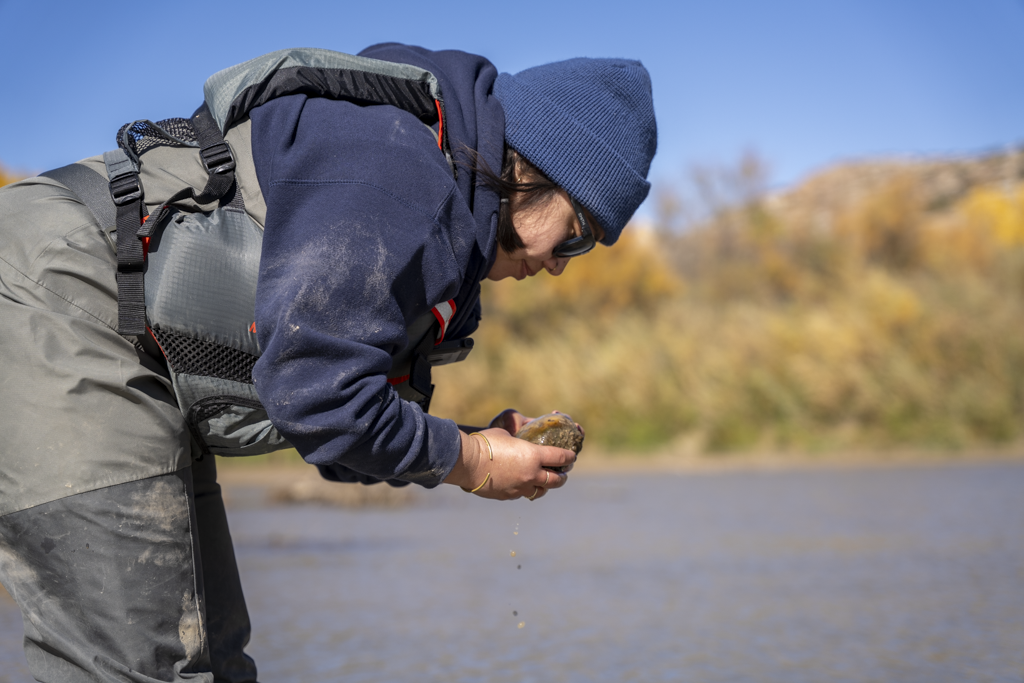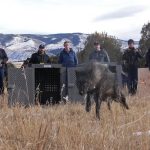As Colorado finds more zebra mussels in the Colorado River, is removal out of the question?
A single-day sampling effort on four Western Slope rivers leads to additional detections of zebra mussels and another invasive aquatic species

Colorado Parks and Wildlife/Courtesy photo
When it comes to zebra mussels in the Colorado River system, Colorado Parks and Wildlife Director Jeff Davis summed it up this way: “We look, we find.”
While Colorado’s first detection of the highly invasive zebra mussel was in 2022, Parks and Wildlife, alongside federal and local partners, has ramped up testing for the species following a growing number of finds this summer on the Western Slope.
“Because it’s in a river system, we kind of are in a space of probably removal is out of the question at this point,” Davis said. “But, we now work with our partners, water purveyors, producers, etc., to make sure that we can manage the presence of those species in the Colorado system.”
Zebra mussels are an invasive aquatic species notorious for their prolific reproduction and destruction of ecosystems and infrastructure. Eradicating the species is challenging — not only because they can spread rapidly, but also because it is difficult to target a single invasive species without affecting the entire river and aquatic ecosystem. A single zebra mussel can produce up to 30,000 veligers in one spawning event and up to one million in a year.

Davis’ comments to the Parks and Wildlife Commission on Thursday followed a single-day sampling effort in late October, where the wildlife agency and partners looked for zebra mussels from the Colorado River headwaters in Grand County to Westwater, Utah, just across from the state border.
Additional sampling took place in the Eagle and Roaring Fork rivers, as well as where the Gunnison River meets the Colorado River.
According to a press release, the effort covered over 200 miles of river, with samples collected from 200 locations. Parks and Wildlife confirmed that additional adult zebra mussels were found in the Colorado River near Rifle and in Glenwood Canyon, both in the single-day effort and additional surveys.
The discoveries have led Parks and Wildlife to declare the Colorado River as “infested” from the confluence of the Eagle River down to the Colorado-Utah border.
Previously, this designation — which means there is an established and reproducing population of the species — only applied to the river from 32 Road near Grand Junction to the Colorado-Utah border. Other bodies of water that carry this designation in Colorado: Highlane Lake and Mack Mesa Lake in Highline Lake State Park, West and East Lake at the James M. Robb Colorado River State Park, and a private body of water in Eagle County.
No adult zebra mussels or veligers have been found upstream from the Colorado River’s confluence with the Eagle River.
Parks and Wildlife staff have previously stated that the private lake in Eagle County — where a large population of adult zebra mussels was found in July — was believed to be a primary source of the mussel detections downstream in the Colorado River, the Government Highline Canal, Highline Lake, and Mack Mesa Lake.
However, on Thursday, Rachael Gonzales, a spokesperson for Parks and Wildlife, said that “while the identification and treatment of the private body of water is an important step forward for managing zebra mussels on the Western Slope, we still don’t conclusively know how these detections are related.”
This uncertainty is why the agency is planning to continue the sampling efforts upstream and downstream of the private body of water, Gonzales added. According to a press release, Parks and Wildlife will continue sampling through Thanksgiving, focusing on small ponds in the Grand Valley.
With this increase in sampling and detection, Davis said it was an important time to continue funding and providing resources so “this doesn’t become an uncontrollable situation for all of us.”
Given that the complete eradication of zebra mussels is a difficult task, a significant part of Parks and Wildlife’s response focuses on mitigating and preventing their spread. Primarily, this includes asking all water users to clean, drain, and dry any motorized and hand-launched vessels and fishing gear after exiting any body of water.
The single-day sampling effort in October also led to the discovery of another aquatic nuisance species in the Roaring Fork River: New Zealand mudsnails. The mudsnails are another invasive species that Parks and Wildlife describes as “voracious eaters that reproduce rapidly, eating much of the available food,” that can have negative impacts on aquatic insect larvae, native snails, and fish populations.
The species were previously found in the Gunnison and Eagle rivers. This was the first detection in the Roaring Fork River.










